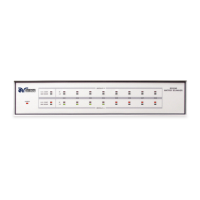4
Direct Current, DC: Current that flows in one direction only. The source of direct current is said to
be polarized and has one terminal that is always at a higher potential than the other.
Frequency: The number of cycles an AC waveform repeats over time. Usually given in Hertz (Hz).
Ground: Refers to the point of low potential in a circuit to which all other voltages are referenced.
May or may not be tied to the earth. Also referred to as Earth.
Hot: Used to refer to the test lead or output side of an instrument that is at high potential.
Impedance: The property of capacitive or inductive items to limit certain frequencies.
Insulation: Gas, liquid or solid material which has a volume resistivity of at least 10
12
Ω-cm and is
used for the purpose of restricting current flow between conductors.
Leakage: AC or DC current flow through insulation and over its surfaces. Current flow is directly
proportional to voltage. The insulation is thought of as a constant impedance unless breakdown
occurs.
Neutral: The point of low potential in a circuit to which all other voltages are referenced. Also known
as Common.
Peak Current: The maximum amplitude of an AC current waveform. For a sinusoid, 1.414 x the
RMS value.
Power: The amount of work performed by an energy source over time, given in Watts (W).
PF (Power factor): Power Factor = W/VA where W =Watts (Real Power) and VA =Volts x Amps
(apparent power). It is important to note that the closer the power factor is to "1" the more resistive the
DUT is. The closer the power factor is to 0 the more reactive (inductive or capacitive) the DUT is.
Reactive Current: The current component due to the reactive impedance of a load. Also called
imaginary current.
Real Current: The current component due to the resistance of a load.
Resistance: The property of a substance that impedes current and results in the dissipation of
power in the form of heat. The practical unit of resistance is the ohm (Ω). Symbol = R
Return: The path by which current returns to a source.
RMS: The Root Mean Squared value of a voltage or current waveform. An RMS waveform delivers
the same amount of energy to a load as a DC waveform of the same value. For a sinusoid, the RMS
value is .707 x the peak value.
Total Current: The vector sum of the real current component and the reactive current component
produced by an applied voltage.
VA: A rating of instantaneous power found by multiplying an instrument’s maximum output current by
its maximum output voltage.
Voltage: The force which causes current through an electrical conductor, given in volts (V).
Symbol = V

